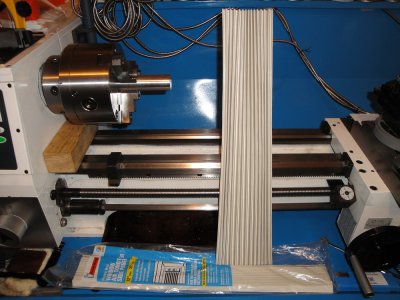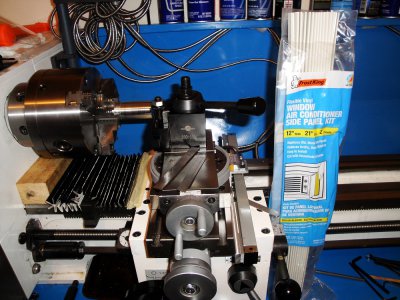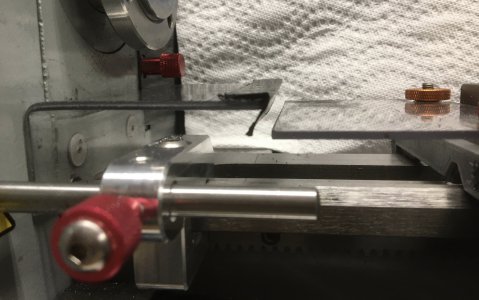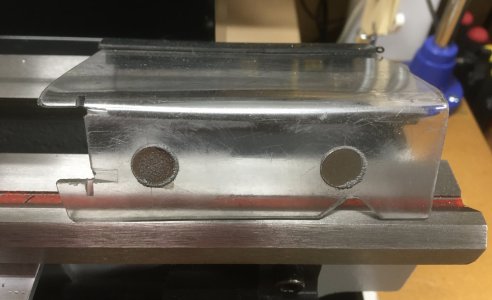This was a minor interest of mine in an effort to keep the machine free of debris as much as possible and typical of me in that I like to keep my tools and such looking like new where possible. Then I worked with brass for the first time. The lathe was recently purchased and now starting to be used more. I didn't cut much brass during a trial, but it was everywhere I didn't want it to be. I didn't like the prices I was seeing for something so simple and uninspiring, so I recalled the AC window seal bellows I had seen some years back and found it at Lowe's in abundance compared to specifically branded options, $17 for two pieces. The only down side is that it doesn't come in black.
It can be painted, but you may want to allow it to sit in its relaxed state when you do, or else the paint will crack at the apexes more, or less. Each end has double sided tape so it was easy to extend the length and attach it to the carriage. I decided to leave the end near the head stock loose for easy inspection, it stays in place with a little weight, or magnet attached. I'm going to drape a leather square over the tool post to protect the cross slide, as I will be working with a lot more brass shortly. Oh, I have some plexiglass squares to use as a shield on both the lathe and the mill.
View attachment 453164
View attachment 453165





